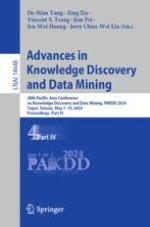2024 | OriginalPaper | Chapter
Dfp-Unet: A Biomedical Image Segmentation Method Based on Deformable Convolution and Feature Pyramid
Authors : Zengzhi Yang, Yubin Wei, Xiao Yu, Jinting Guan
Published in: Advances in Knowledge Discovery and Data Mining
Publisher: Springer Nature Singapore
Activate our intelligent search to find suitable subject content or patents.
Select sections of text to find matching patents with Artificial Intelligence. powered by
Select sections of text to find additional relevant content using AI-assisted search. powered by
